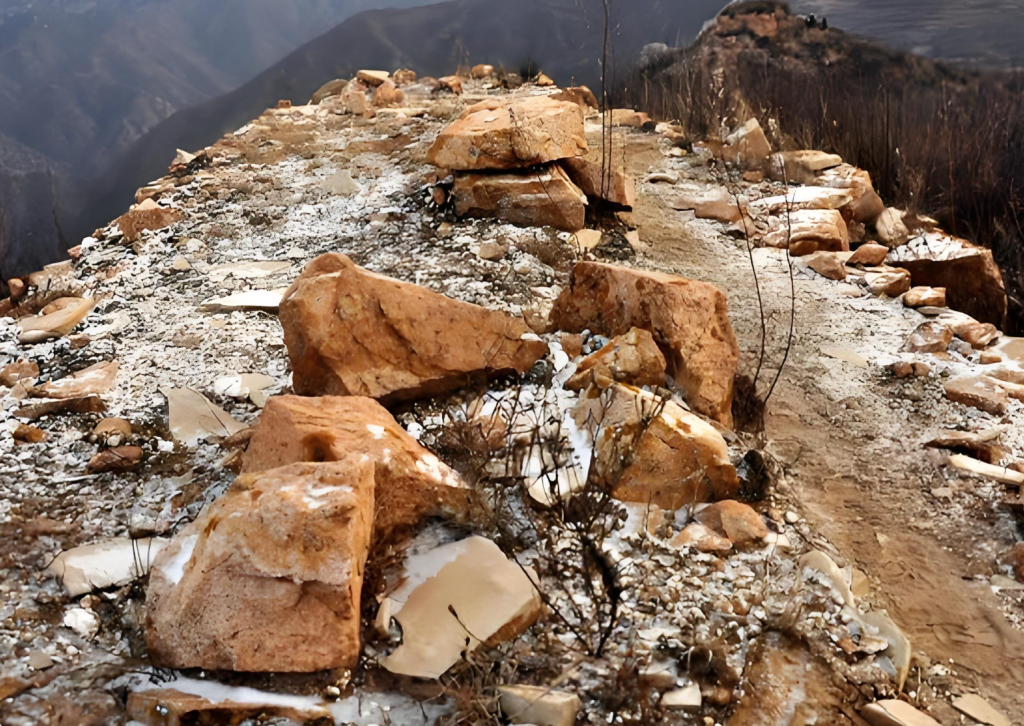Building the Great Wall of China across centuries was a huge feat, shaped by ancient tools, local materials, and countless workers’ efforts. Though methods varied by dynasty (from Qin to Han, Ming), core practices stayed practical, fitting the tough terrain and limited technology of the time.
Materials: Using What’s Nearby
Ancient builders didn’t transport materials far—they relied on local resources to save time and energy.
- Rammed earth: The most common material, used in flat or dry areas (like northern plains). Workers mixed soil, sand, straw, and sometimes lime, then packed the mix tightly into wooden frames. When dry, it became hard enough to resist attacks.
- Stone: In mountainous regions (e.g., Yinshan Mountains), they cut local rocks to build the wall’s base and sides. This made the wall stronger against wind, rain, and enemy tools.
- Bricks and tiles: By the Ming Dynasty, bricks were used more—fired in kilns nearby, they were lighter than stone but still durable. They were often held together with mortar made of rice paste and lime.

Tools: Simple but Effective
Without modern machines, builders used basic tools:
- Wooden frames: For rammed earth—these held the soil mix while workers pressed it down with heavy wooden rams.
- Iron or stone chisels: To cut and shape stones for mountain sections.
- Baskets and carts: Carried soil, stones, or bricks—some were pulled by horses, others by workers themselves, especially on steep hills.
- Beacon towers: Not just tools for defense, but also for communication. Workers built these every 3–5 kilometers to send fire or drum signals, keeping construction teams connected.
Labor: Who Built the Wall?
Millions of people took part in building the wall over time. Most were:
- Soldiers: Many armies were ordered to build sections, especially in border areas (e.g., Han Dynasty soldiers built the Hexi Corridor wall).
- Farmers and workers: Conscripted from local villages, often during slow farming seasons.
- Prisoners and captives: Used for tough, dangerous tasks, like carrying heavy stones up mountains.

Key Construction Steps
- Surveying: First, teams checked the land to find the best route—usually along hills or rivers, to use natural barriers.
- Laying the base: For stone walls, they dug deep trenches and filled them with rocks to keep the wall stable. For rammed earth walls, they flattened the ground first.
- Building up: Workers added layers of rammed earth or stones, one by one. Each layer was pressed hard to avoid gaps.
- Adding defenses: Finally, they built watchtowers on top and added parapets (low walls) for soldiers to hide behind.
The ancient Great Wall’s construction showed how ancient Chinese people adapted to nature and used simple skills to create a world-famous structure. Every section tells a story of hard work—proof of human cleverness and persistence.